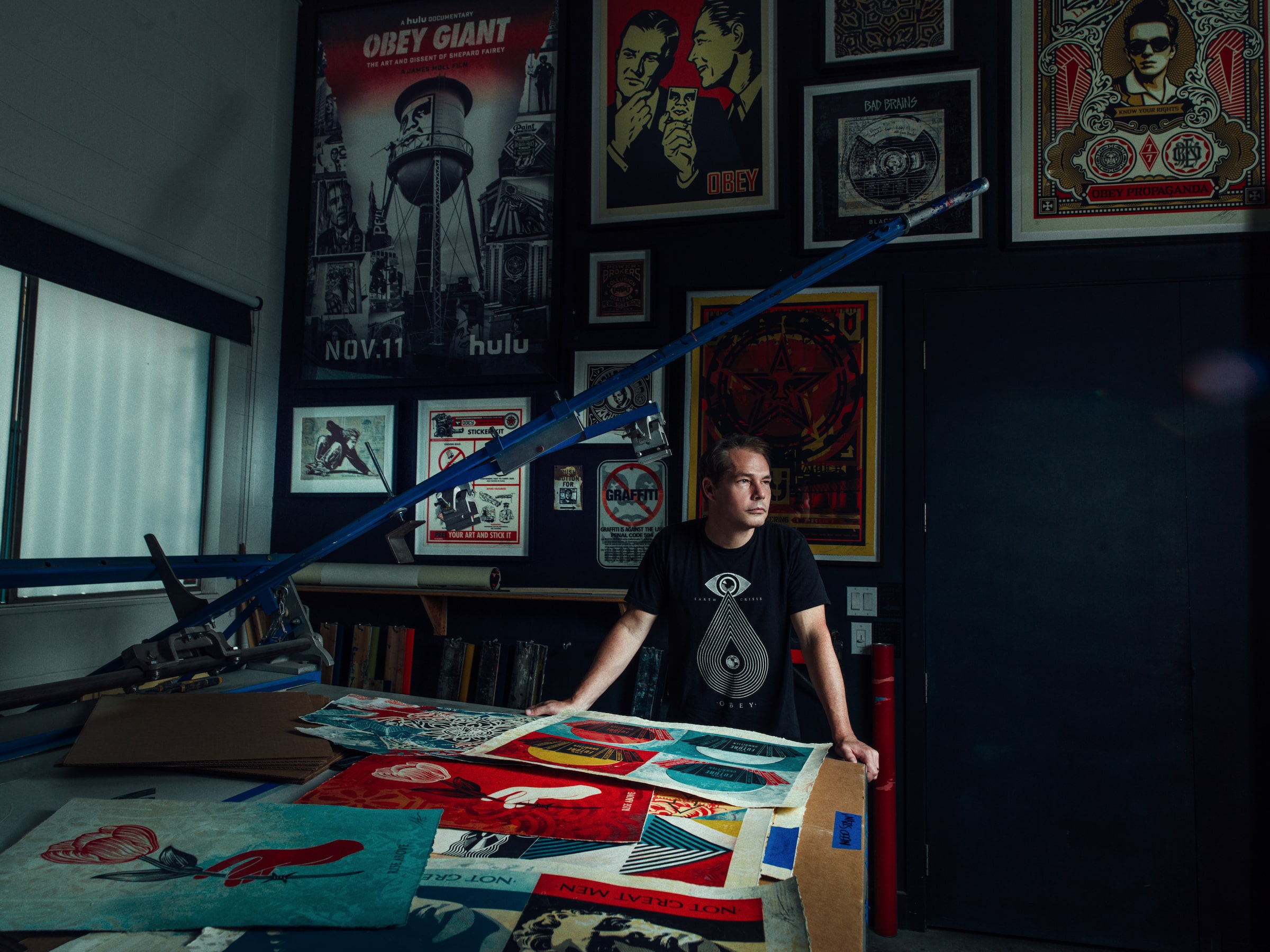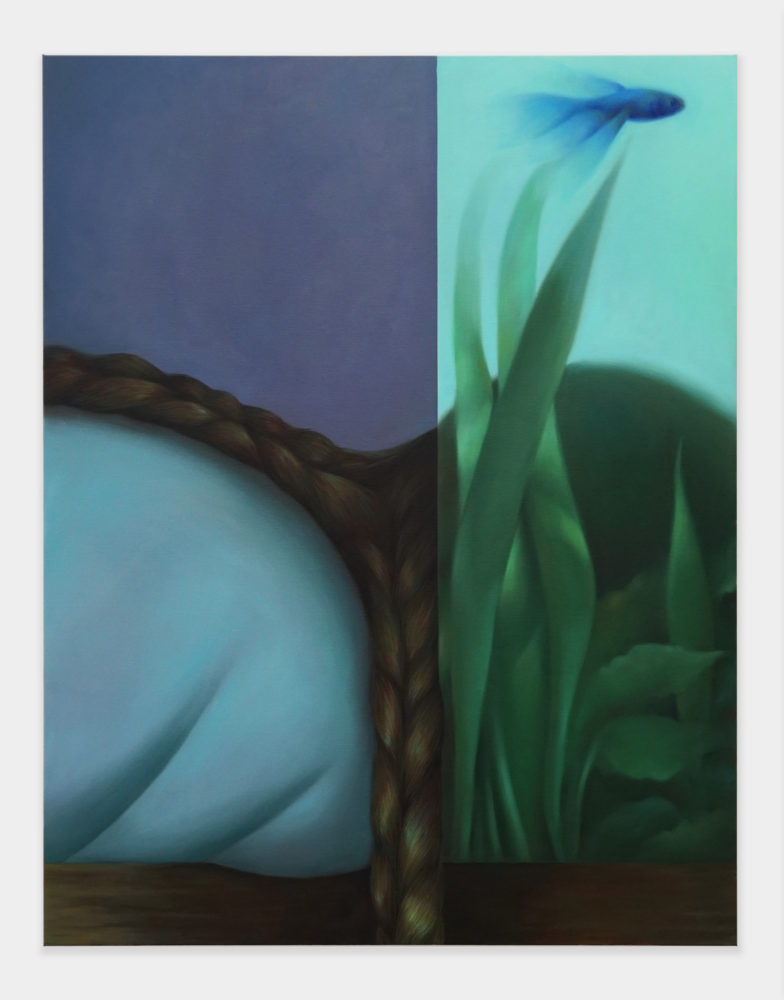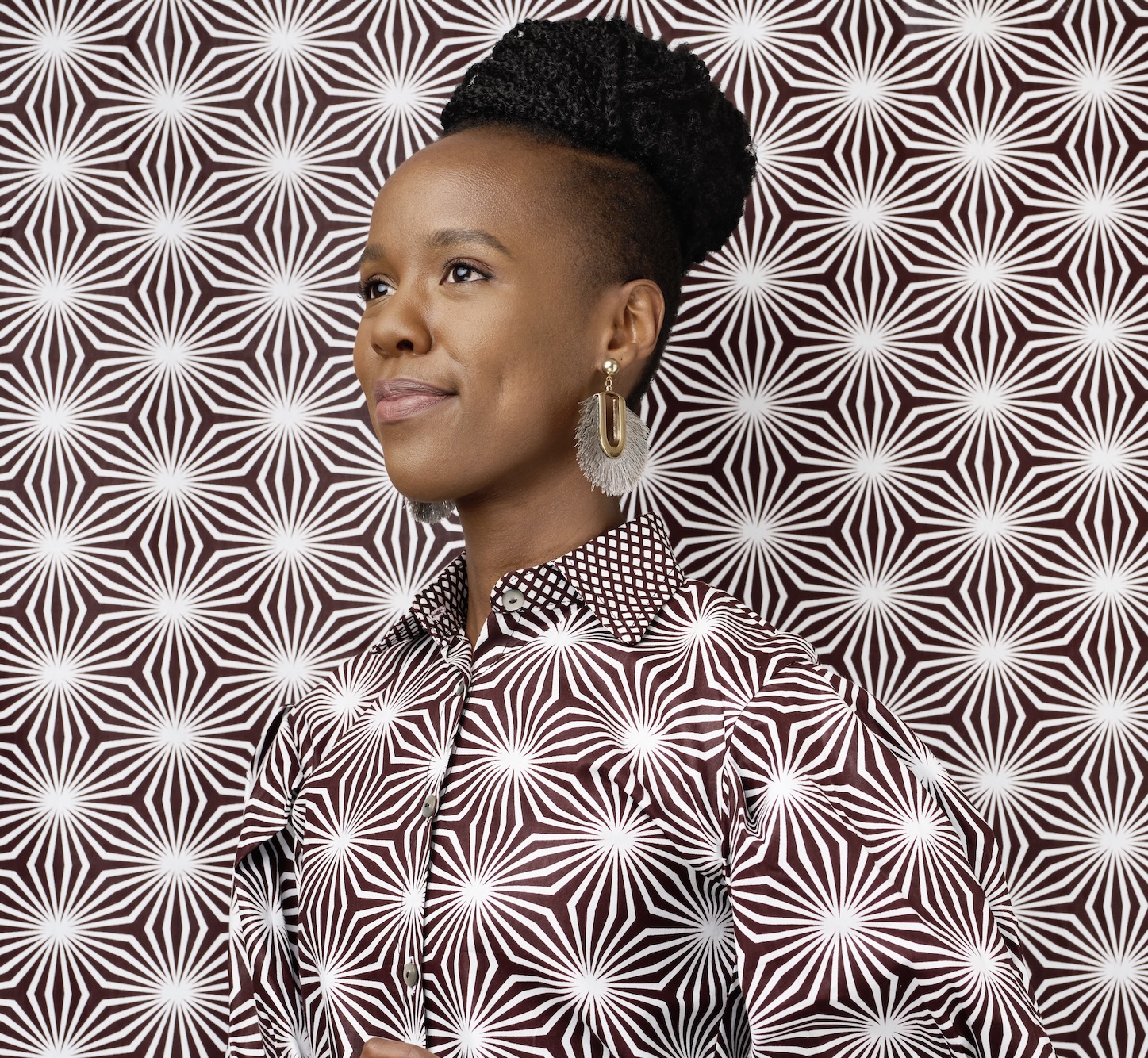The London-based French-Lebanese artist Mouna Rebeiz approaches her work from a personal and spiritual standpoint. With a background in clinical psychology from universities in Paris and Beirut, it wasn’t until Rebeiz took a class by Alix de la Source that she learned of her own magic in art. For ten years under Source, a 17th- and 18th-century-style painter and lecturer at the Louvre Museum, she learned the techniques of old master painters and spent her early career re-creating such works. She has since broadened her creative practice to include other mediums and techniques, embracing sculpture and technology, and showing at spaces like Saatchi Gallery in London, Fondation Paul Ricard in Paris, and Menasart Fair in Beirut.
For the Republic of San Marino at the 59th Venice Biennale, she presented an immersive and interactive AI installation of sculptures and paintings on mirrors, named “The Soothsayer,” at the St. George Anglican Church, that recalled spiritism and tarot card readings. Last fall, her solo show in New York at Leila Heller Gallery, “Totems,” followed themes similar to those in Venice. Esoteric to some yet imperative to Rebeiz’s practice, mystic and spiritual threads represent deeper meanings for which the artist is constantly searching. Whitewall spoke to Rebeiz about her recent work and a sonic collaboration with Bang & Olufsen for the World Cup.
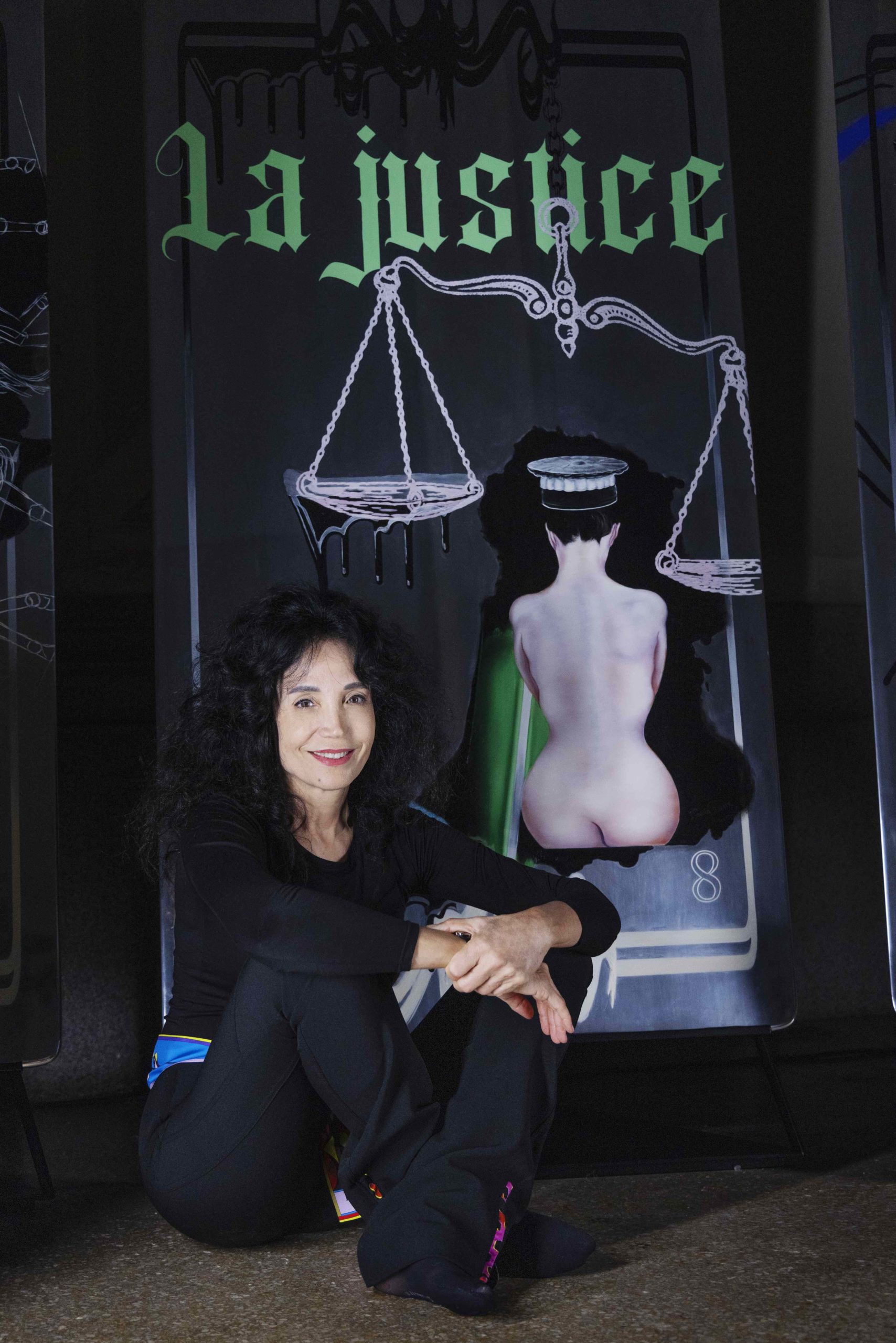
Portrait of Mouna Reibez by Steve Benisty.
WHITEWALL: Upon entering “The Soothsayer,” guests activated the exhibition and were assigned a tarot card reading, “Where did the idea for this exhibition begin?”
MOUNA REBEIZ: Before “The Soothsayer,” we were isolated because of the pandemic. I wanted to speak about the emptiness in our existence—the physical void. We were all isolated, and I felt so much emptiness. I was walking through the deserted street of Beirut with my sister, and I felt that intense void. It was quasi-sublime, something very attractive. Then, I turned toward the [Giorgio de] Chirico tarot and the divine.
It reminded me of the physicist Marie Curie. When she lost her husband, she went into spiritism. When you lose all hope, you need somewhere to hold on to the hope and the truth. And since we are in the age of artificial intelligence, I decided to connect it with the art of divinación. So I ditched the fortune teller, and I linked all of the tarots with AI.
WW: In “The Soothsayer,” you chose old master paintings to pair with tarot card themes. How did merging these two fields feel?
MR: When I was working on the subject while we were still in COVID, I was driven back to my training. I needed to anchor myself in time, so I wanted to revisit the old masters. I have a huge bibliography of catalogs, a huge library. I went on the floor with all of the books to see the old masters’ repertoire. The new comes from the old, so I turned toward the future, but I never lost sight of tradition. I was inspired when I went through all the old masters, and I started picking out the images that corresponded to each theme of the tarot cards.
At that time, I wasn’t very knowledgeable in tarot. I was only amazed by the pictures, but I had never drawn any cards. When I started to read about it, I decided to revisit the old masters, and intuitively everything came to my mind.
The images I picked were more or less accurate. How? I cannot tell. I was surrounded by a lot of magic.
WW: In your 2018 show “The Trash-ic or Trash in the Face of Beauty” at Saatchi Gallery, you presented a rendition of Raphael’s Three Graces painting, named I Selfie Therefore I Am after your friend and the philosopher Elsa Godart’s book with the same title. Hung on a wall, it showed three women taking selfies in front of New York, and was surrounded by Godart’s books stacked as totems. How did this lead to your New York exhibition “Totems”? What will the visitor experience be like?
MR: A forest of 14 totems with mirrors on the ground. The atmosphere will be very dark, with the whole room covered in black fabric. There will be a lot of reflections, and the light will play a very big role in the installation.
For the show at Saatchi Gallery, I built totems, and I asked the audience during the opening to come and take one book. Doing so, the totems became less and less until they disappeared. The audience digested the whole process of the selfie. They took over the totems completely, and then it didn’t exist, so it’s a process of digesting the whole process.
Then, during COVID, I wrote on the theme of flower power. What would be the flower power of 2020? Inside that theme, I wanted to make a world map out of puzzles. I did the puzzle—the same puzzle that you can see out of the totems—in two pieces, and I wanted to include in it pictures of countries. I wanted to take the world map and the countries the way I see it; from Mouna’s eyes. From that, while I was working with the puzzles, I made it stand and then said to myself, “Why don’t I build up a totem?” This is how the totems were born. I ordered more puzzles and started to put them on one another until I reached the figure of the totem.
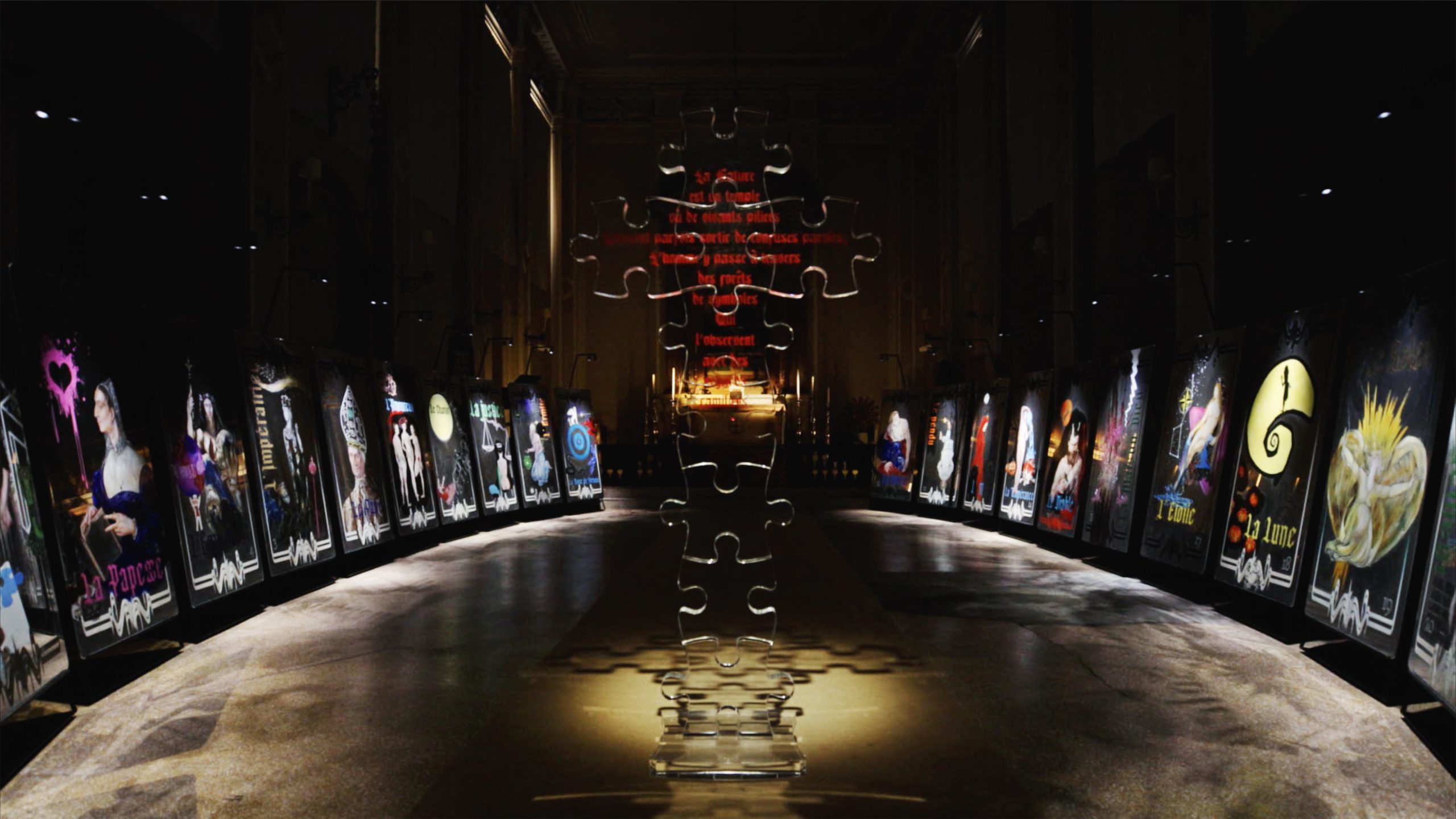
Installation view of “The Soothsayer,” photo by Steve Benisty.
WW: Why do you feel you’re drawn to totems and tarot cards?
MR: Tarots and the totem have the same root. They are archetypal. They’ve existed since the beginning of humanity. They are thousands and thousands of years before religion. The totems are not for divinity purposes, but the tarots are. It’s all about archetypes and synchronicity. But the totems, the process of the initiation is to let them stand in front of the totem, the pole, and have an astral journey. The totem is about the cosmic and the telluric. The cosmic is the high point and the telluric is the base, where you have all the memories of the ancestors. What has been done during ages and thousands of years didn’t disappear, it is stored somewhere—like a computer. When the initiate would travel in their mind up and down, they link the cosmic with the telluric, with the memory of the ancestors, in order to translate it into their time. That’s what the totem is about. It’s like our spine. It’s the DNA of our civilization. It’s all that has been said and written since the beginning of time until now.
WW: For the World Cup in Qatar (November 20–December 18), you partnered with Bang & Olufsen to customize headphones for the English team with puzzle pieces on the product. What relationship do you see between art and sound?
MR: Music is the base of everything. Before human beings drew, sounds existed. Music is universal; it’s the only art that goes right into your soul without getting into your mind. When you draw, it might go through your brain, but when you hear music, it goes straight to your soul.
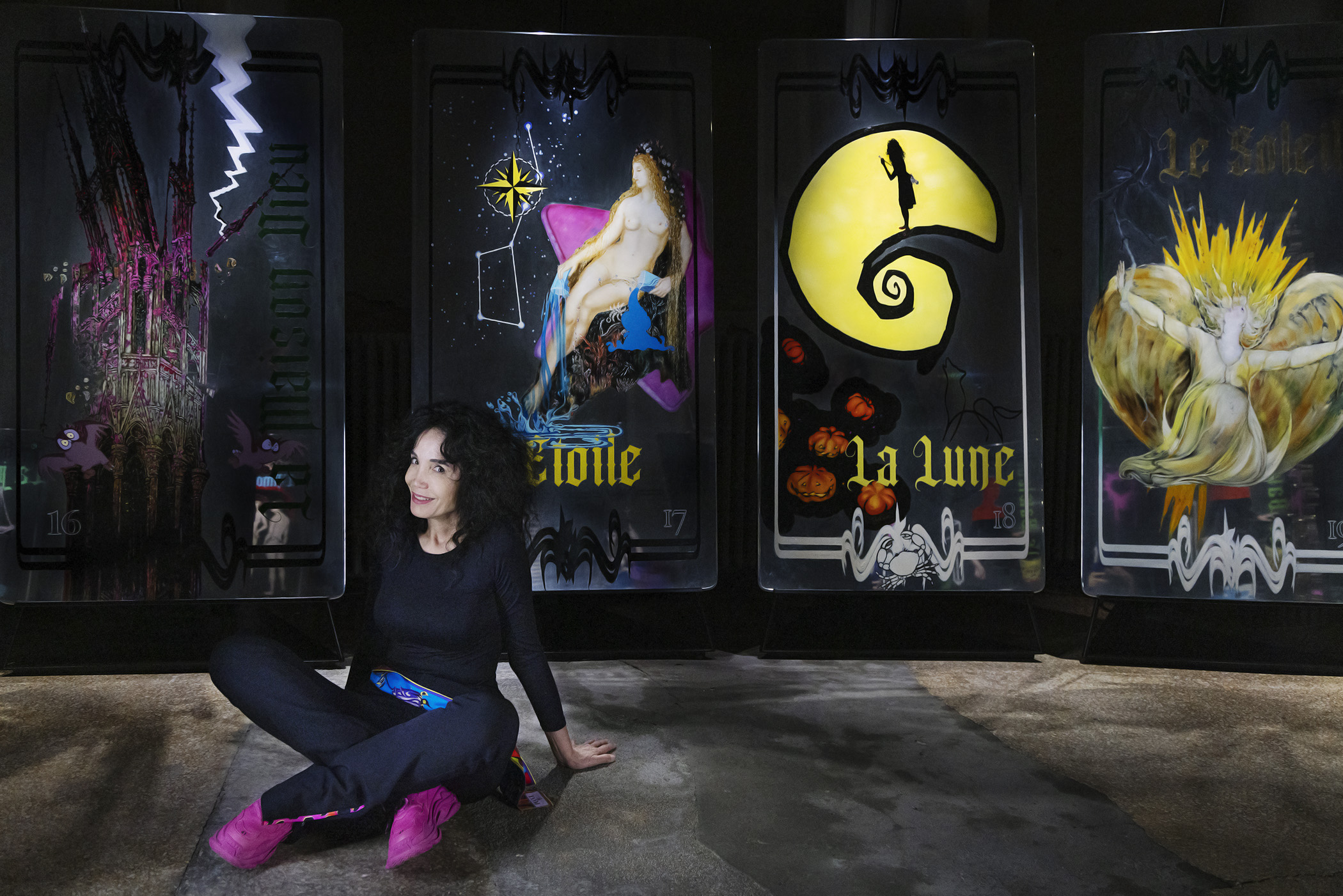
Portrait of Mouna Reibez by Steve Benisty.




